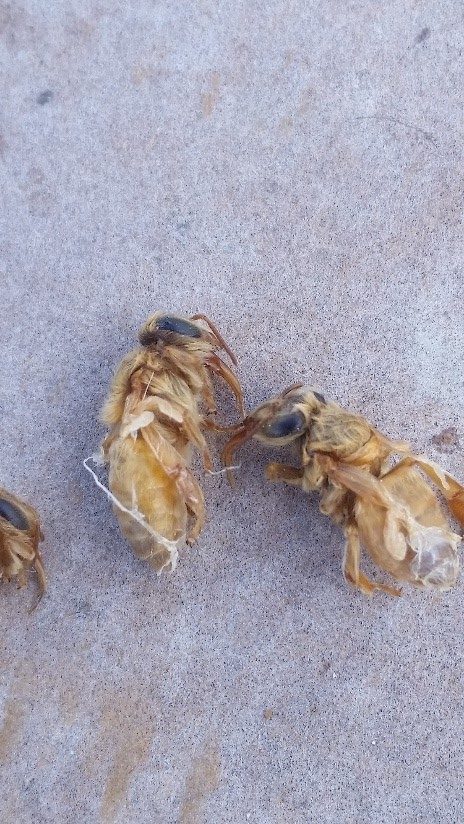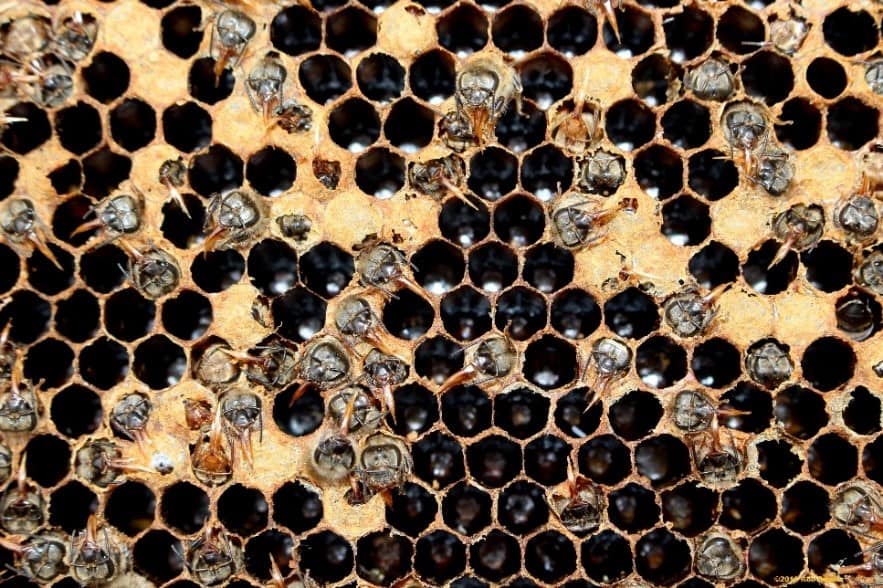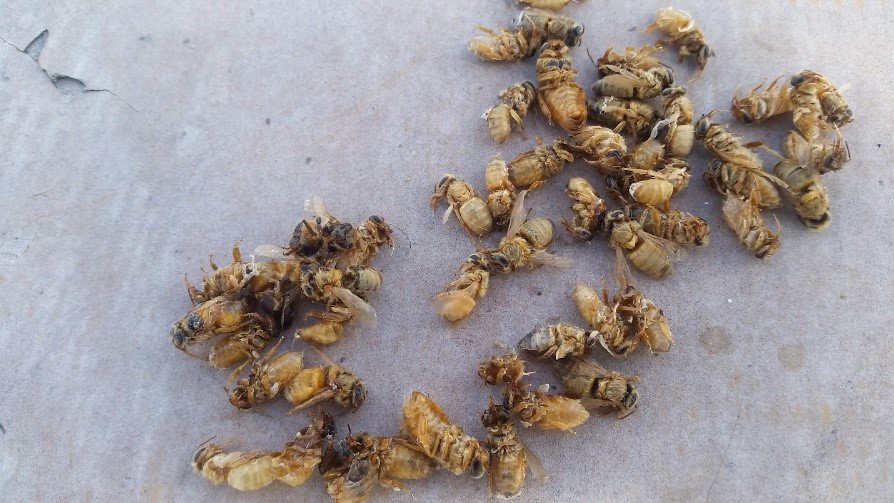Splitting colonies coming out of almonds this year has been difficult for some of our beekeepers affected by the sudden loss of much of the brood raised near the end of almond pollination. The jury is still out, but symptoms look very similar to the bee kill that occurred in 2014 and may be due to fungicides or IGRs (or combination of both). Some of our tech teams have spent the last 2 weeks making the rounds to beekeepers, taking samples from bee bread, pupae, and eclosed bees that just can’t make it out of the cells. We are working closely with the California Department of Pesticide Regulation (CA DPR) and the Almond Board to investigate these cases and take samples inside the effected colonies for pesticide residue analyses, as well as generate a map of where our effected participants were worst hit.
Typical symptoms of those colonies suffering include eclosed bee heads emerging out of cells with proboscises protruding, malformed or no wings, and young bees pulled out of cells and removed from the colony. Colonies appear to recover after time on fresh pollen; however the setback in bee population has severely diminished the colonies available to split for future pollination contracts and for honey production.




Varroa and Nosema March loads
March averages for Varroa were at 0.3 mites/100 bees. Nosema has increased from 0.89 million spores/bee in February to an average of 1.7 million spores/bee this month. Both of these averages were from CA and MN samples only.